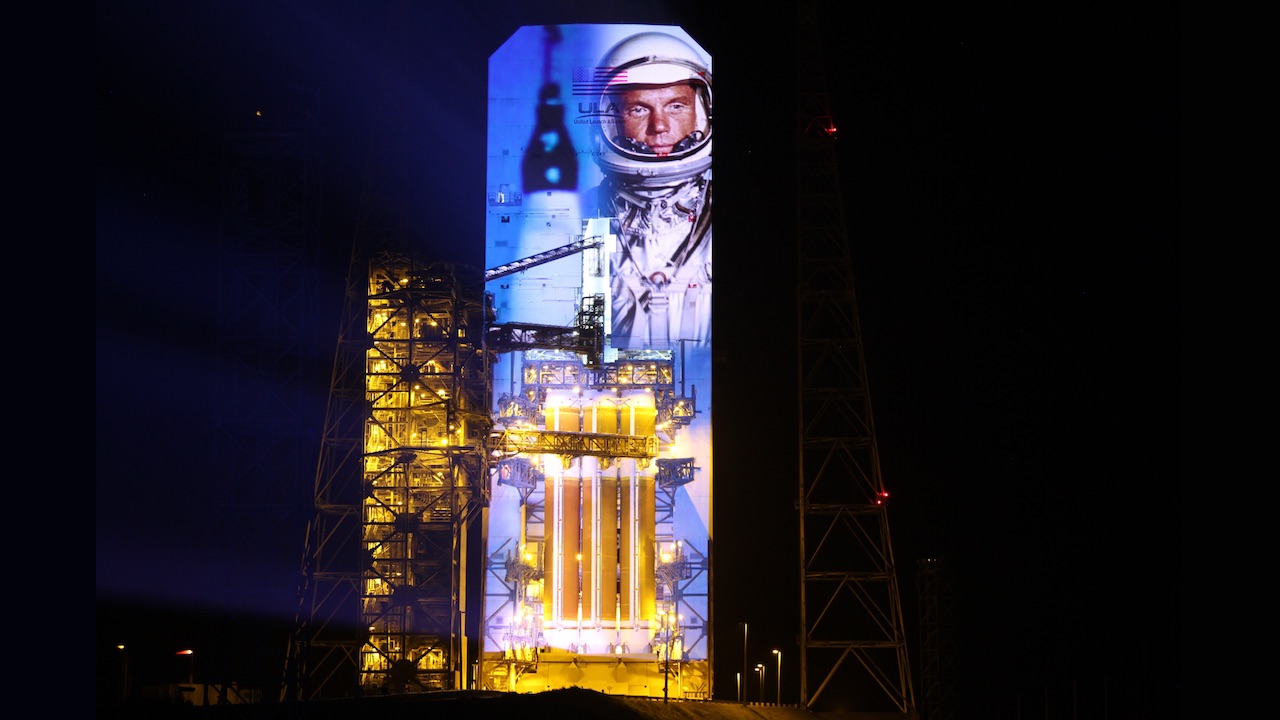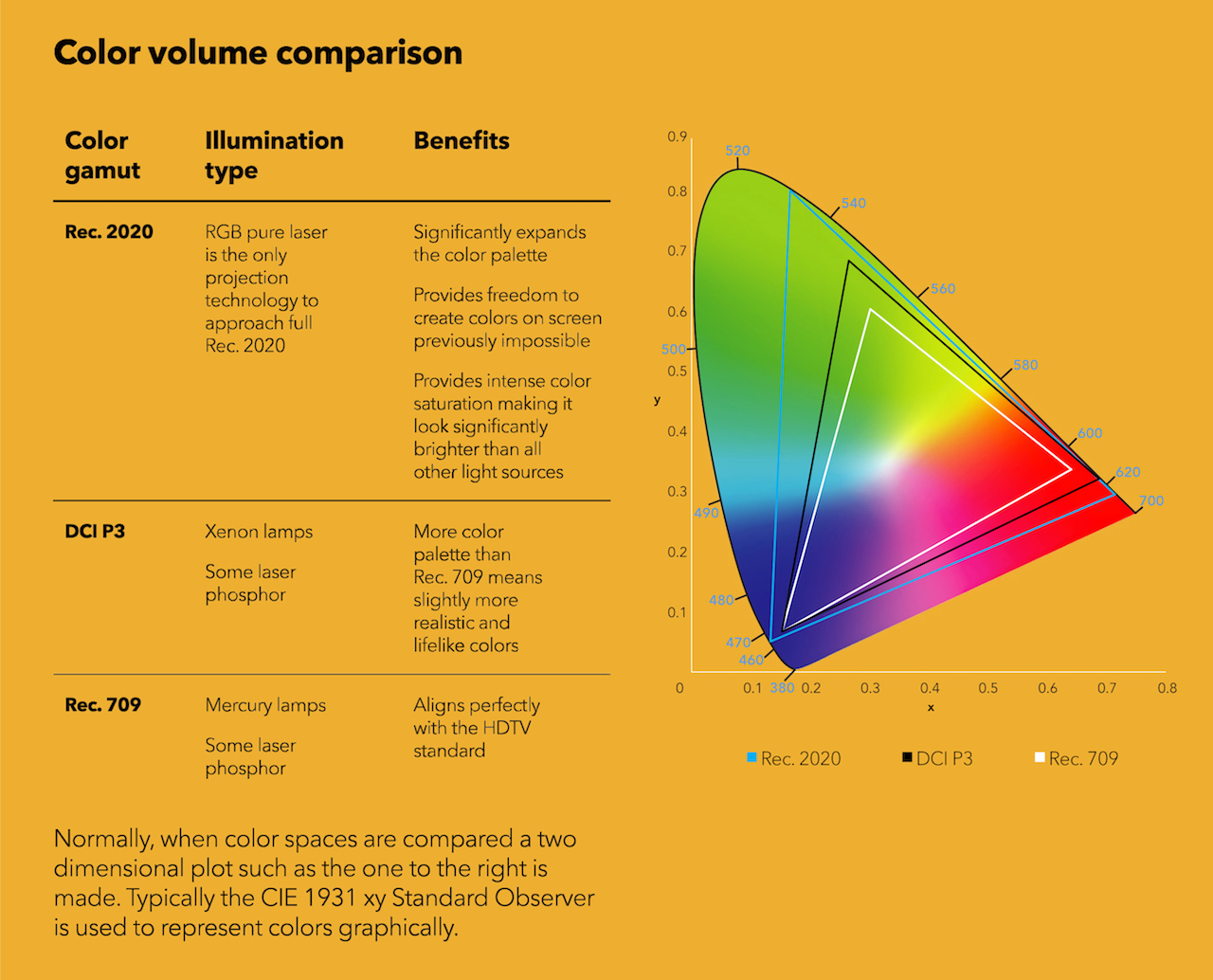Breaking Down the Advantages of RGB Pure Laser Projection

With all of the innovative technologies behind modern projection on the market today, it can be difficult to decide which kind of solution to opt for. One leading choice is RGB pure laser, and it offers a number of advantages over competing technologies.
Color Volume
There are four main advantages of RGB pure laser projection technology over laser phosphor and xenon, and they work hand-in-hand to deliver the best possible image: color, frame rate, resolution, and operational efficiency. RGB pure laser technology uses individual red, green, and blue lasers to produce the most dynamic range of color possible today. The color approaches Rec. 2020, which is 75.8 percent of the color that the human eye can perceive based on the CIE 1931 color chart. (And by comparison, Rec.709, the color space typically used in television and most pro AV applications, covers 35.9 percent of the spectrum.) This means that RGB pure laser can better project natural, real-world colors, as well as branded colors—think a certain cola red.
Related: The Technology Manager's Guide to Projectors and Screens
Higher Frame Rates
Frame rates can impact the sharpness and visible detail in content. Higher frame rates better represent fast moving objects, since it reduces motion blur and increases image detail. For example, most films are shown at 24 frames per second, which can cause flickering and stuttering across the screen, like in a fast-moving action sequence. The image isn’t smooth, and detail is lost as the motion begins to blur. But shown with a frame rate at 60Hz or higher, the image is sharper and more detailed. With select RGB pure laser projectors on the market, frame rates can range from 120Hz at 4K and up to 480Hz at 2K.

Resolution and Contrast
The last consideration is resolution. Resolution has become the buzz word in the home entertainment market—4K and 8K TVs, 4K streaming content—but what does in mean in pro AV? To start, it’s more complicated than on the consumer side of display technology. Pro AV must control for more factors, like ambient light, the projection surface, and the viewing angle. And to complicate this further, resolution is often intertwined with contrast: the higher the contrast, the higher the perceived resolution. With RGB pure laser, resolutions from 2K up to 8K are possible, with varying frame rates.
Efficiency and Maintenance
Moving from lamp-based projection to laser has significant operational advantages. New RGB projection systems feature system architectures with integrated cooling—so external chillers are a thing of the past—creating a highly-efficient system that draws less power, has no filtered light, and wastes no light. Sealed optical paths result in consistently dependable illumination. RGB pure laser is the longest lasting light source available, with the lowest maintenance.
Advancements in laser technology are resulting in greater installation flexibility for live events, rental and staging, large-scale projection mapping, and theme parks, where a lightweight, compact design is essential. The size of pure laser projectors has come down considerably in both weight and overall dimensions, with new models weighing as little as 175 pounds—with the laser rack and chiller built-in—and omnidirectional installation now possible, in any direction, angle and position. And lastly, with advancements in laser technology, noise levels have decreased significantly, with levels as low as 46dBA, to not distract audiences.
A daily selection of features, industry news, and analysis for AV/IT professionals. Sign up below.
RGB pure laser projection raises the bar on visuals, leading with superior color, frame rate, contrast and resolution.
Brad Martin is a senior product manager at Christie.
Brad Martin is a senior product manager at Christie.
